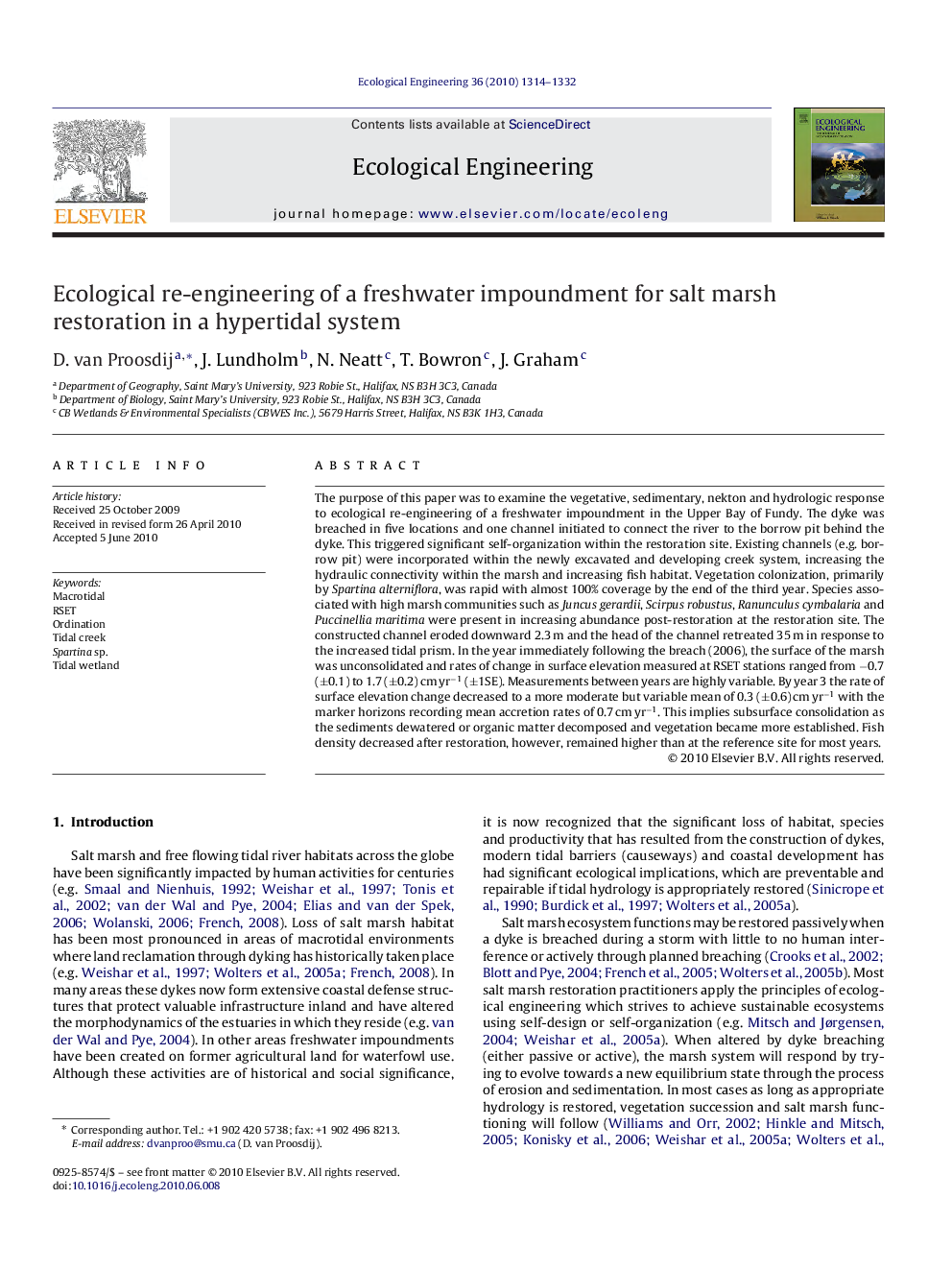| Article ID | Journal | Published Year | Pages | File Type |
|---|---|---|---|---|
| 4390579 | Ecological Engineering | 2010 | 19 Pages |
The purpose of this paper was to examine the vegetative, sedimentary, nekton and hydrologic response to ecological re-engineering of a freshwater impoundment in the Upper Bay of Fundy. The dyke was breached in five locations and one channel initiated to connect the river to the borrow pit behind the dyke. This triggered significant self-organization within the restoration site. Existing channels (e.g. borrow pit) were incorporated within the newly excavated and developing creek system, increasing the hydraulic connectivity within the marsh and increasing fish habitat. Vegetation colonization, primarily by Spartina alterniflora, was rapid with almost 100% coverage by the end of the third year. Species associated with high marsh communities such as Juncus gerardii, Scirpus robustus, Ranunculus cymbalaria and Puccinellia maritima were present in increasing abundance post-restoration at the restoration site. The constructed channel eroded downward 2.3 m and the head of the channel retreated 35 m in response to the increased tidal prism. In the year immediately following the breach (2006), the surface of the marsh was unconsolidated and rates of change in surface elevation measured at RSET stations ranged from −0.7 (±0.1) to 1.7 (±0.2) cm yr−1 (±1SE). Measurements between years are highly variable. By year 3 the rate of surface elevation change decreased to a more moderate but variable mean of 0.3 (±0.6) cm yr−1 with the marker horizons recording mean accretion rates of 0.7 cm yr−1. This implies subsurface consolidation as the sediments dewatered or organic matter decomposed and vegetation became more established. Fish density decreased after restoration, however, remained higher than at the reference site for most years.
